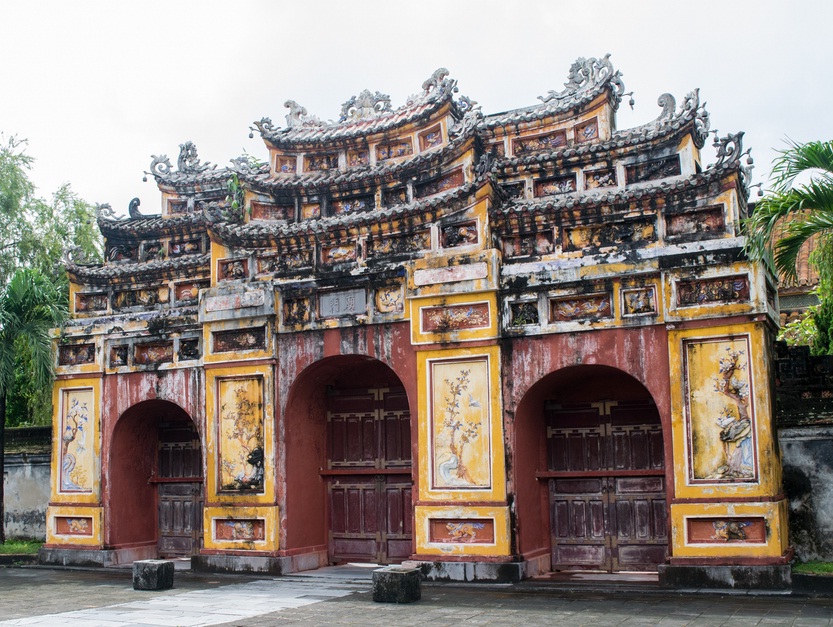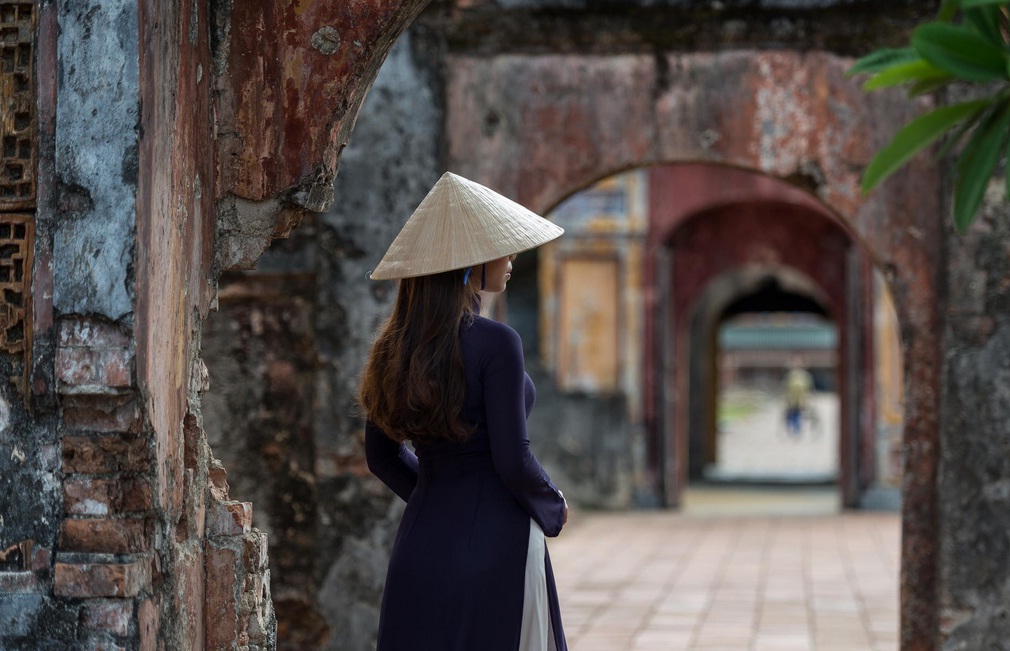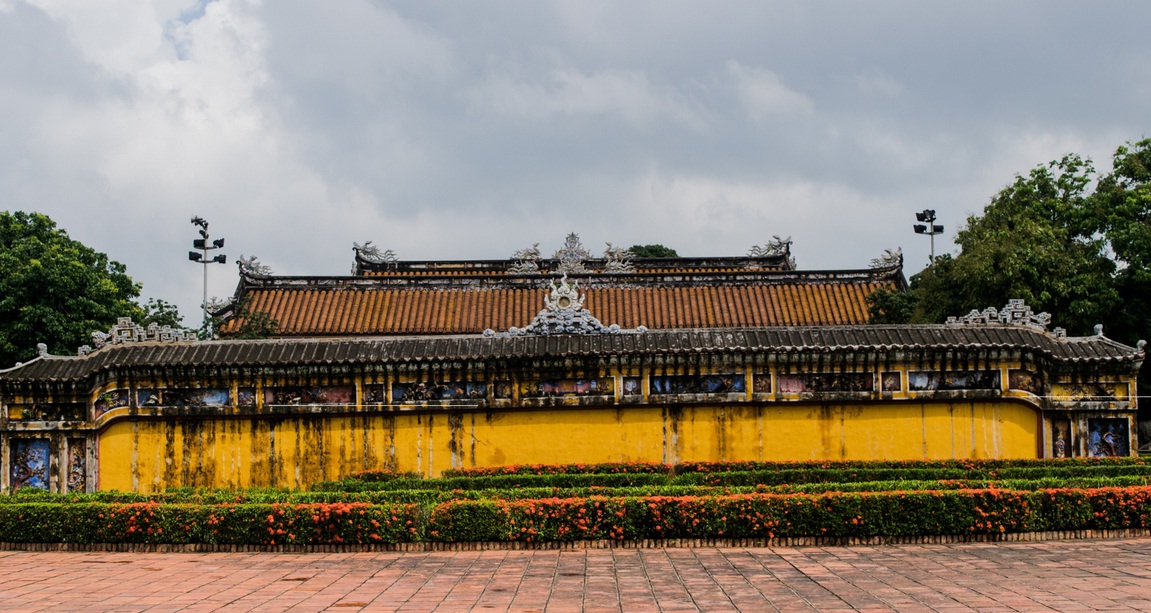Trip to Vietnam and visit Hue UNESCO world heritage city
A visit to Hue city define a rich diversity of culture, heritage and beauty of a city that has been defined as an ancient city for centuries, Hue is the cradle of Vietnam Heritage, the Hue citadel was registered as a as a UNESCO heritage list in 1993. Today, almost every visitor pays a visit to Hue to experience what a cultural side of Vietnam has to offer.
The rich and unique historical and cultural values of Hue become a must for all trips to Vietnam. Arriving in Hue, you will wonder that what certainly you should visit when you are in town, we at Lux Travel DMC give you some suggestions in following article. Let’s start by discovering the history of Hue.
Love history, then visit Hue
A visit to Hue, a city that plays a major role in the history of Vietnam perhaps because of the strategic and the geographical position of the town, Hue has held a special place in the history Vietnam. What we see today once was tinged with endless greenery with a peaceful river flowing in the middle of the town as it was the property of the former kingdom of Champas, the ancient kingdom of Vietnam in the 13th century. The Hue citadel is work of the last dynasty of Vietnam, the Nguyen dynasty. Besides the Hue imperial family for centuries, generated a cultural expansion, religious, artistic and sumptuous gourmet.
The Ancient Citadel of Hue
Hue citadel has three concentric walls: Thanh Phong (for defending the Citadel), Hoang Thanh (Imperial Citadel) and Tu Cam Thanh (Forbidden Purple City).
Thanh Phong – the defense Citadel
According to the geomancy Thanh Phong was built during the reigns of Kings Gia Long and Minh Mang (from 1805 to 1832), the principle of yin-yang and the five essential elements (metal, wood, water, fire, earth) and military technique in the Vauban style. This is a very strong and effective fortification for defense reason to protect the city of Hue. this is your trip to Vietnam
Phong Thanh itself includes two other walls, the first is Hoang Thanh (wall of the Royal city) inside which sat the highest levels of the court of the Nguyen. The second, also the smallest, Tu Cam Thanh (Wall of the Forbidden Purple City) is where king and his royal family used to live.

Hoang Thanh – Imperial City
The imperial city has a rectangle form and contains a hundred architectural works that most of them were completed during the reign of King Minh Mang. This building was constructed as on chessboard, on the following principle: the left buildings for the men left and the right building for the women; the main buildings in the center, addictions to both sides. The height of the structures must observe strict rules. The literature within this wall can be classified into some of the major areas, surrounded by walls.
♦ defense areas: walls and trench system around the royal city with 4 doors: Ngo Mon (Noon Gate) to the south, for the king and national guests; Hien Nhon (Gate of Humanity) east; Duc Chuong (Gate of Virtue) to the west, for women; Hoa Binh (Peace Gate) to the north. Each door communicates with a bridge over the trench.
♦ Major ceremonies Zone: Thai Hoa (Palace of the Throne) and Dai Trieu Nghi (Esplanade Great Greetings).
♦ Worship Zone: temples of Trieu Mieu, Thai Mieu, Hung Mieu, The Mieu and Phung Tien palace.
♦ Area reserved for mother queen (mother and paternal grandmother of the king): Dien Tho Palace (Longevity) and Truong Sinh (Long Safety).
♦ Area reserved for education and entertainment activities princes: Co Ha garden, building Van Kham.
♦ Zone reserved for the king and his family: Tu Cam Thanh (Forbidden Purple City)

Tu Cam Thanh – Forbidden Purple City
The Purple Forbidden City is the smallest rectangular wall, located on the radial axis of the Imperial City. Formerly, the Forbidden Purple City housed within it some forty buildings. It remains now only two: Thai Binh Lau (Pavilion of Peace) and Duyet Thi Duong (Theatre).
The seven tombs of the Nguyen kings
Heading toward the west from the Citadel of Hue, on both side of the Perfume River, are the 7 royal tombs dedicated to the Nguyen Dynasty, they are notable for what they enclose, and also by its integration into the river landscape.
– Tomb of King Gia Long – Thien Lang Tho
– Minh Mang Tomb – Hieu Lang
– Tomb of Thieu Tri – Xuong Lang
– Tomb of Tu Duc – Khiem Lang
– Dong Khanh Tomb – You Lang
– Tomb of Duc Duc – Lang Year
– Tomb of Khai Dinh – Lang Ung
Perfume River, the natural symbol of Hue
Perfume River can’t be missed when you plan a visit to Hue, the river has the length of 30 km, the Perfume River is the natural symbol of Hue. There is countless number of poems, prints and songs dedicated to this river. This poetic name comes from the flowers and also fruit trees. The river flows near the imperial tombs to move to the heart of the city of Hue, before flowing into a lagoon.



